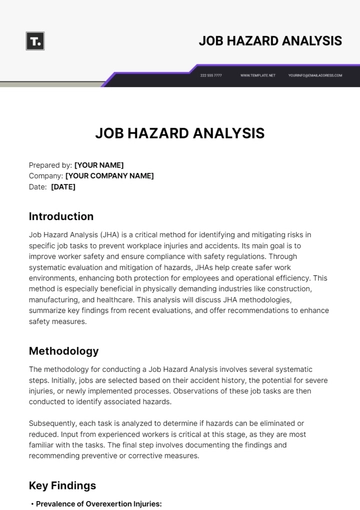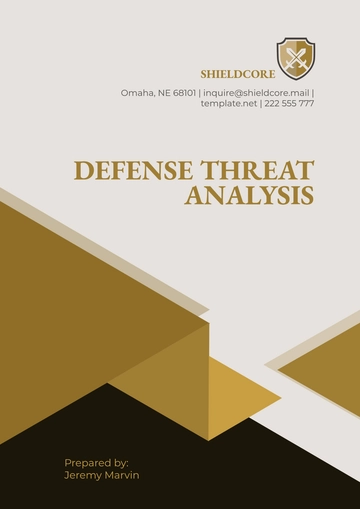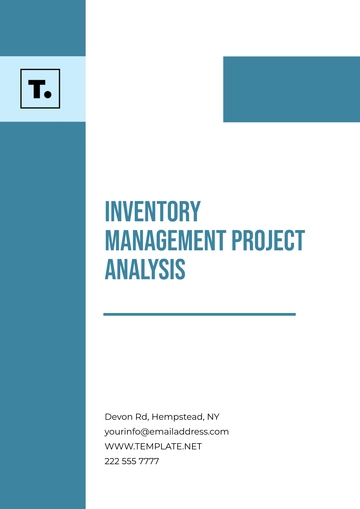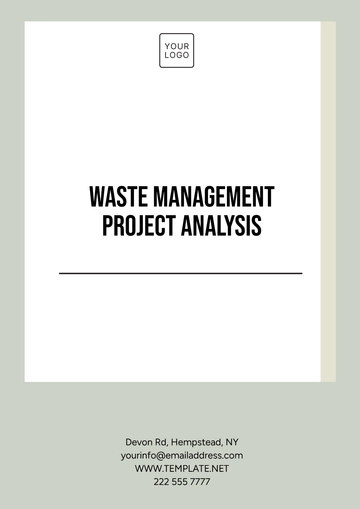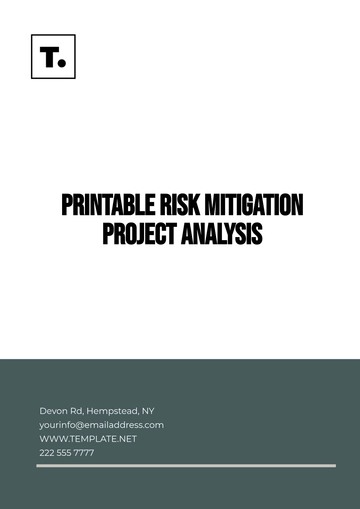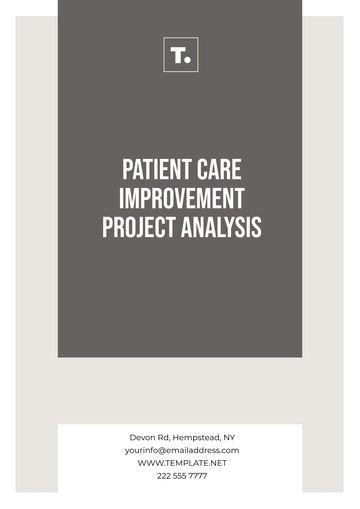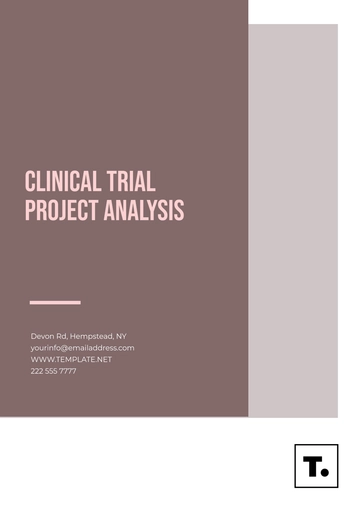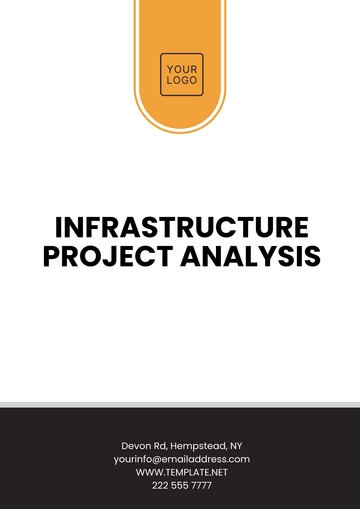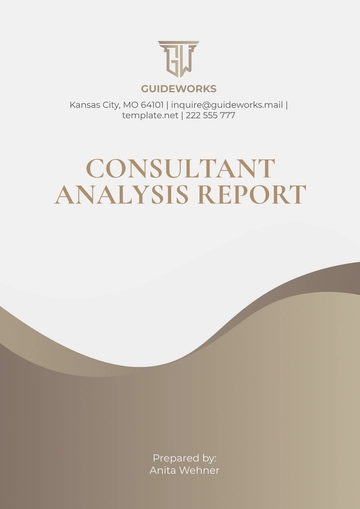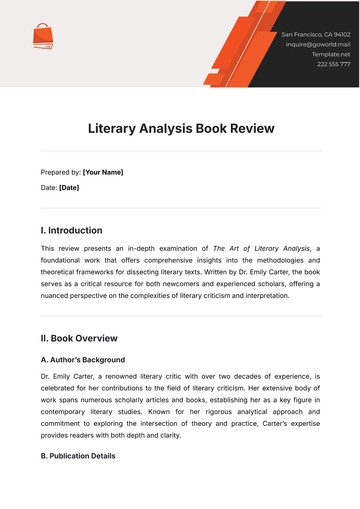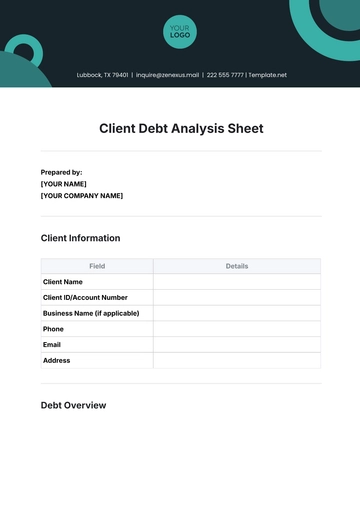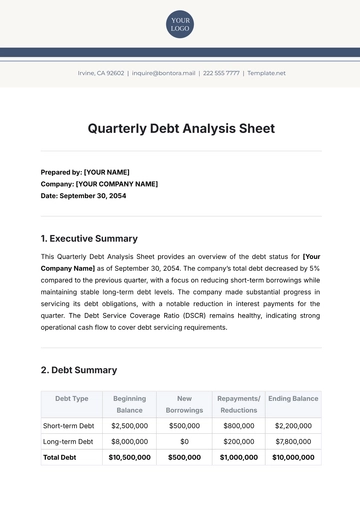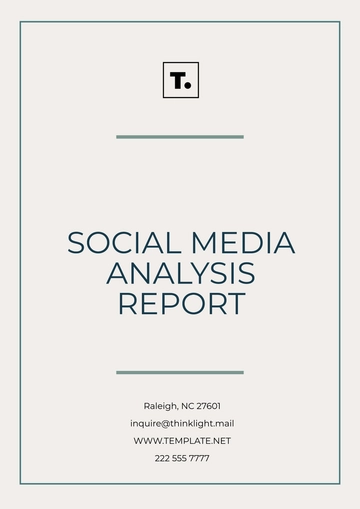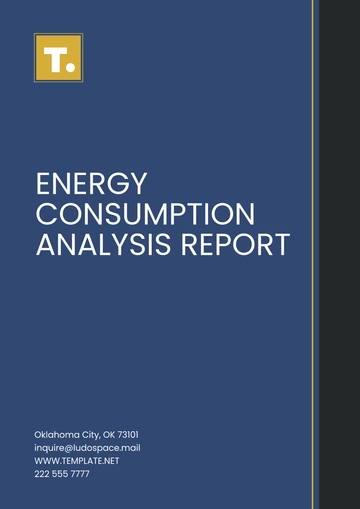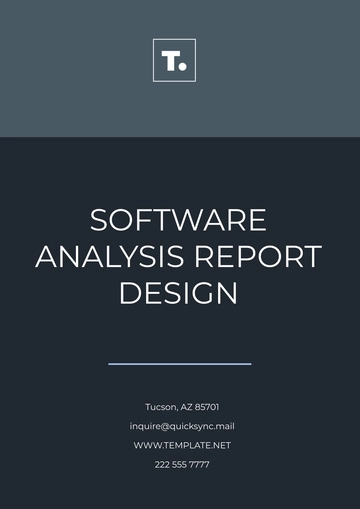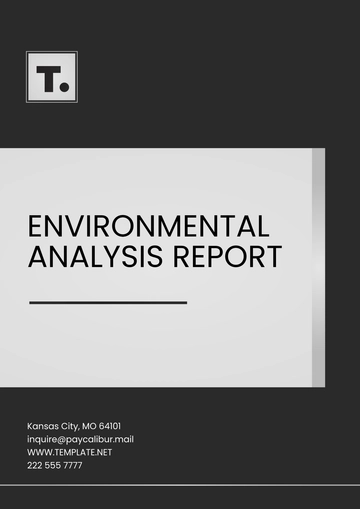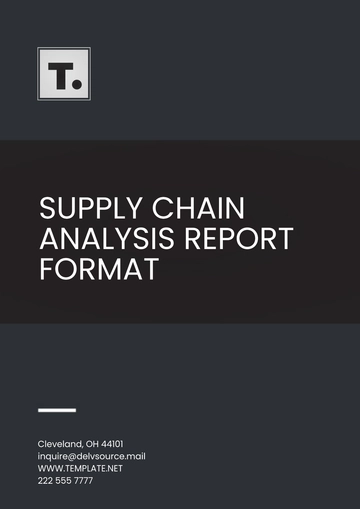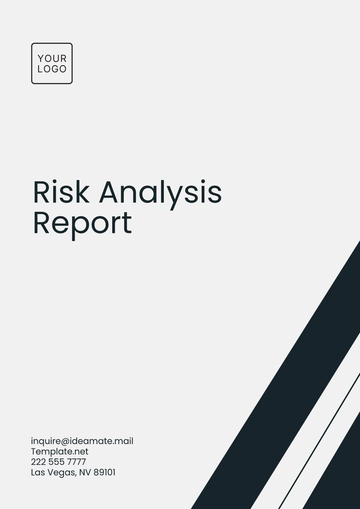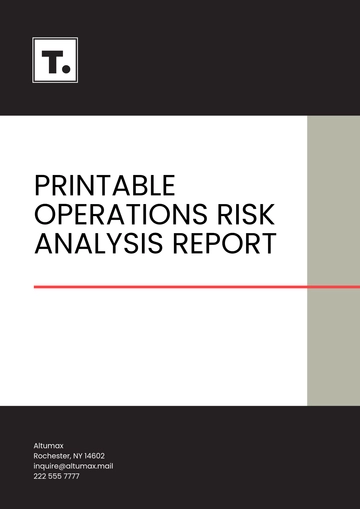Free Restaurant Supply Chain Analysis
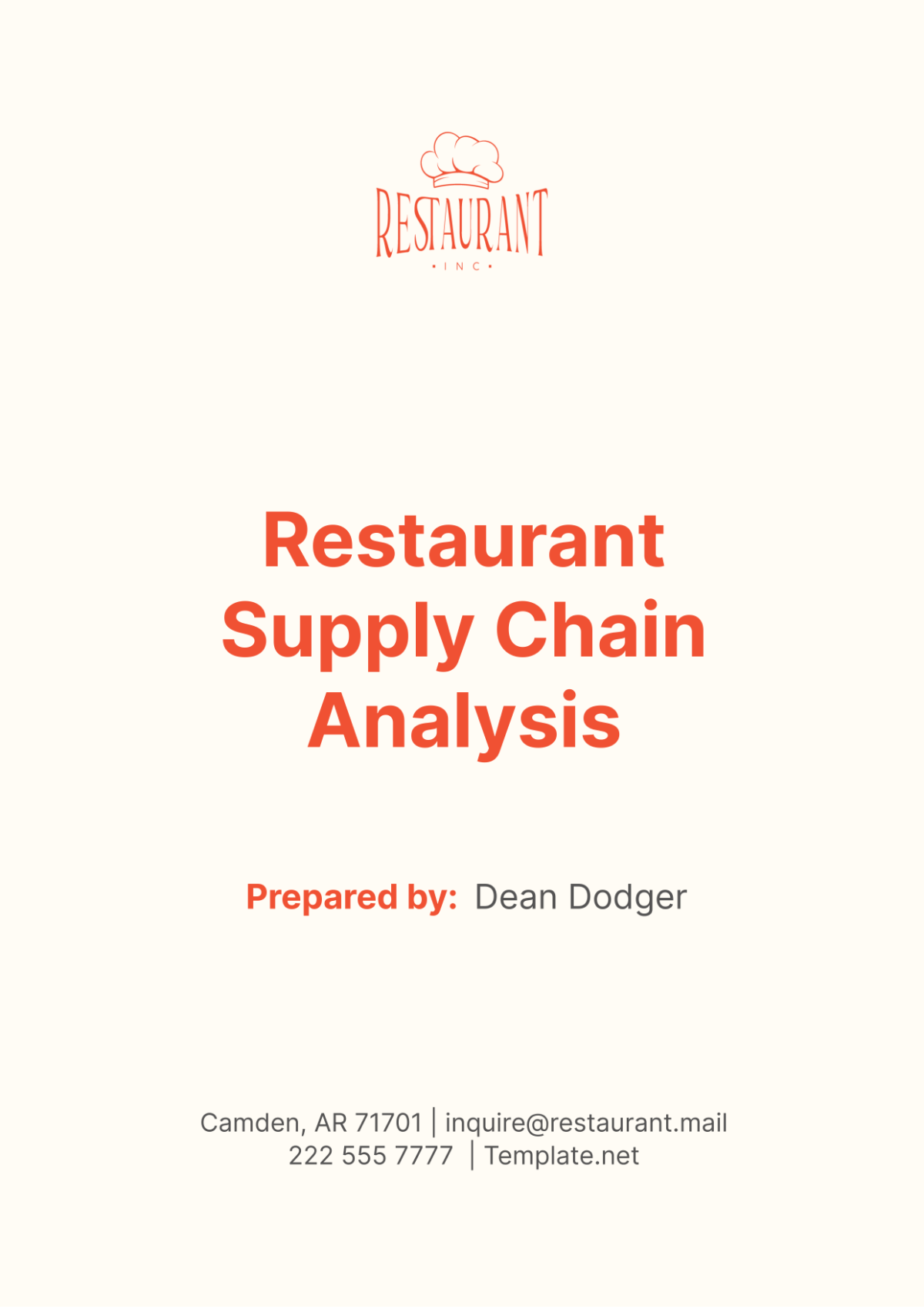
I. Executive Summary
The goal of this Restaurant Supply Chain Analysis is to provide a detailed examination of the current supply chain processes at [Your Company Name], identify inefficiencies, and propose enhancements. This analysis aims to help [Your Company Name] streamline its supply chain operations, reduce costs, and improve overall efficiency. By evaluating current practices, supplier relationships, and logistics, we can offer actionable recommendations to enhance the supply chain's performance and reliability.
Our analysis explores the procurement processes, inventory management, supplier reliability, and logistics efficiency. Additionally, we assess the impact of supply chain disruptions and propose strategies to mitigate risks. The recommendations provided are designed to help [Your Company Name] implement best practices in supply chain management, such as adopting advanced inventory management systems, establishing strong supplier partnerships, and optimizing logistics operations. These steps will ensure better supply chain control, reduced costs, and improved overall profitability. Through this analysis, [Your Company Name] can make informed decisions to enhance its supply chain resilience and competitive position.
II. Current Supply Chain Practices
This section examines the existing supply chain practices at [Your Company Name]. We review the methods used for procurement, analyze inventory management strategies, and assess the efficiency of logistics operations. Understanding current practices is crucial for identifying areas that need improvement and implementing effective strategies.
A. Procurement Processes
Procurement is the process of acquiring goods and services needed for the restaurant's operations. Efficient procurement practices are essential for ensuring the timely availability of high-quality ingredients and supplies.
Supplier Selection
Selecting the right suppliers is critical for maintaining product quality and consistency. [Your Company Name] should evaluate potential suppliers based on factors such as product quality, pricing, delivery reliability, and responsiveness.
Order Management
Effective order management involves placing orders accurately and timely to meet the restaurant's needs without overstocking or understocking. This includes establishing clear communication channels with suppliers and using order tracking systems.
Cost Control
Controlling procurement costs involves negotiating favorable terms with suppliers, taking advantage of bulk purchasing discounts, and continuously monitoring market prices to identify cost-saving opportunities.
B. Inventory Management
Inventory management involves overseeing the storage, tracking, and replenishment of goods. Efficient inventory management helps ensure that the restaurant has the right products in the right quantities at the right time.
Inventory Tracking Methods
Manual Tracking
Manual tracking involves recording inventory levels on paper or basic spreadsheets. While simple, this method is prone to errors and can be time-consuming.
Spreadsheet Management
Using spreadsheet software like Excel offers better organization but still requires significant manual data entry and is susceptible to errors.
Inventory Management Software
Advanced inventory management software can automate tracking, provide real-time updates, and generate detailed reports. These systems can help [Your Company Name] make informed decisions and reduce manual labor.
Inventory Turnover Rates
Inventory turnover rate is a crucial metric that indicates how often inventory is used and replenished. A higher rate suggests efficient inventory management, while a lower rate may indicate overstocking or slow-moving items.
Table 1: Inventory Turnover Rate (Last 6 months)
Month | Turnover Rate |
|---|---|
January | 5.2 |
February | 5.0 |
March | 5.3 |
April | 5.4 |
May | 5.6 |
June | 5.1 |
C. Supplier Reliability
Supplier reliability is critical for maintaining a steady flow of high-quality products. Unreliable suppliers can cause disruptions in the supply chain, leading to shortages and increased costs.
Supplier Performance Evaluation
Regularly evaluating supplier performance based on factors such as delivery timeliness, product quality, and responsiveness can help identify reliable suppliers and address issues with underperforming ones.
Building Strong Supplier Relationships
Developing strong relationships with key suppliers can lead to better communication, improved terms, and increased reliability. This can involve regular meetings, collaborative planning, and long-term contracts.
D. Logistics Efficiency
Efficient logistics operations are essential for ensuring timely delivery of products from suppliers to the restaurant. This includes managing transportation, warehousing, and distribution.
Transportation Management
Effective transportation management involves selecting the right carriers, optimizing routes, and monitoring delivery performance. This can help reduce transportation costs and improve delivery reliability.
Warehousing
Efficient warehousing practices ensure that products are stored safely and accessibly. This includes maintaining proper storage conditions, organizing inventory effectively, and implementing security measures.
Distribution
Distribution involves coordinating the delivery of products from the warehouse to the restaurant. Efficient distribution ensures that products arrive on time and in good condition.
III. Analysis of Supply Chain Data
In this section, we analyze supply chain data to understand procurement efficiency, inventory levels, supplier performance, and logistics operations. This analysis helps identify areas for improvement and provides a basis for making informed decisions.
A. Procurement Efficiency
Order Accuracy
Analyzing order accuracy involves comparing ordered quantities with received quantities. High order accuracy indicates efficient procurement processes, while discrepancies suggest areas for improvement.
Lead Times
Lead time is the duration between placing an order and receiving the products. Shorter lead times indicate efficient procurement and reliable suppliers, while longer lead times may indicate inefficiencies.
Cost Analysis
Evaluating procurement costs involves analyzing the prices paid for products and identifying opportunities for cost savings. This can include negotiating better terms with suppliers and exploring alternative sources.
B. Inventory Levels
Stockouts and Overstocking
Analyzing inventory levels involves identifying instances of stockouts (when products are unavailable) and overstocking (excess inventory). Both situations can negatively impact operations and profitability.
Demand Forecasting
Accurate demand forecasting helps ensure that the right products are available in the right quantities. This involves analyzing historical sales data, market trends, and seasonal variations.
C. Supplier Performance
On-Time Delivery
Evaluating on-time delivery rates involves comparing the scheduled delivery dates with actual delivery dates. High on-time delivery rates indicate reliable suppliers, while low rates suggest issues that need to be addressed.
Product Quality
Analyzing product quality involves assessing the consistency and reliability of products received from suppliers. High-quality products are essential for maintaining customer satisfaction and operational efficiency.
D. Logistics Operations
Transportation Costs
Evaluating transportation costs involves analyzing the expenses associated with moving products from suppliers to the restaurant. Identifying cost-saving opportunities can help reduce overall logistics costs.
Warehouse Efficiency
Analyzing warehouse efficiency involves assessing storage practices, inventory organization, and order fulfillment processes. Efficient warehousing helps ensure that products are easily accessible and in good condition.
Distribution Reliability
Evaluating distribution reliability involves analyzing the timeliness and accuracy of product deliveries from the warehouse to the restaurant. Reliable distribution ensures that products are available when needed.
IV. Recommendations
Based on the analysis, we provide several recommendations to improve supply chain management at [Your Company Name]. These include adopting advanced inventory management systems, establishing strong supplier partnerships, and optimizing logistics operations to ensure efficient and cost-effective operations.
A. Adopt Advanced Inventory Management Systems
Implementing advanced inventory management systems can help automate tracking, provide real-time updates, and generate detailed reports. These systems can improve accuracy, reduce manual labor, and support informed decision-making.
B. Establish Strong Supplier Partnerships
Building strong relationships with key suppliers can lead to better communication, improved terms, and increased reliability. This can involve regular meetings, collaborative planning, and long-term contracts.
C. Optimize Logistics Operations
Optimizing logistics operations involves selecting the right carriers, optimizing routes, and monitoring delivery performance. Efficient transportation, warehousing, and distribution practices can help reduce costs and improve reliability.
D. Implement Regular Supplier Evaluations
Regularly evaluating supplier performance based on factors such as delivery timeliness, product quality, and responsiveness can help identify reliable suppliers and address issues with underperforming ones.
E. Improve Demand Forecasting
Enhancing demand forecasting involves analyzing historical sales data, market trends, and seasonal variations to ensure accurate predictions. This helps maintain optimal inventory levels and reduce instances of stockouts and overstocking.
F. Enhance Cost Control Measures
Implementing cost control measures involves negotiating better terms with suppliers, taking advantage of bulk purchasing discounts, and continuously monitoring market prices to identify cost-saving opportunities.
V. Conclusion
By addressing the identified inefficiencies and implementing the recommended improvements, [Your Company Name] can enhance its supply chain management, reduce costs, and improve overall operational efficiency. Effective supply chain management is crucial for maintaining operational continuity, reducing disruptions, and improving profitability. Through this analysis, [Your Company Name] can make informed decisions to streamline operations and bolster its competitive edge.
VI. Contact Information
For further information or inquiries, please contact:
Name: [Your Name]
Email: [Your Company Email]
Phone: [Your Company Number]
- 100% Customizable, free editor
- Access 1 Million+ Templates, photo’s & graphics
- Download or share as a template
- Click and replace photos, graphics, text, backgrounds
- Resize, crop, AI write & more
- Access advanced editor
Gain unparalleled insights into your restaurant's supply chain with Template.net's Restaurant Supply Chain Analysis Template. This indispensable tool offers a comprehensive overview of procurement processes, vendor relationships, and cost optimization opportunities. Fully editable and customizable using our intuitive AI editor tool, it empowers you to streamline operations and enhance efficiency across your supply chain. Take control of your restaurant's procurement strategy, exclusively at Template.net.

